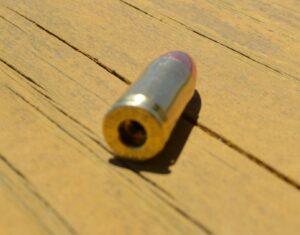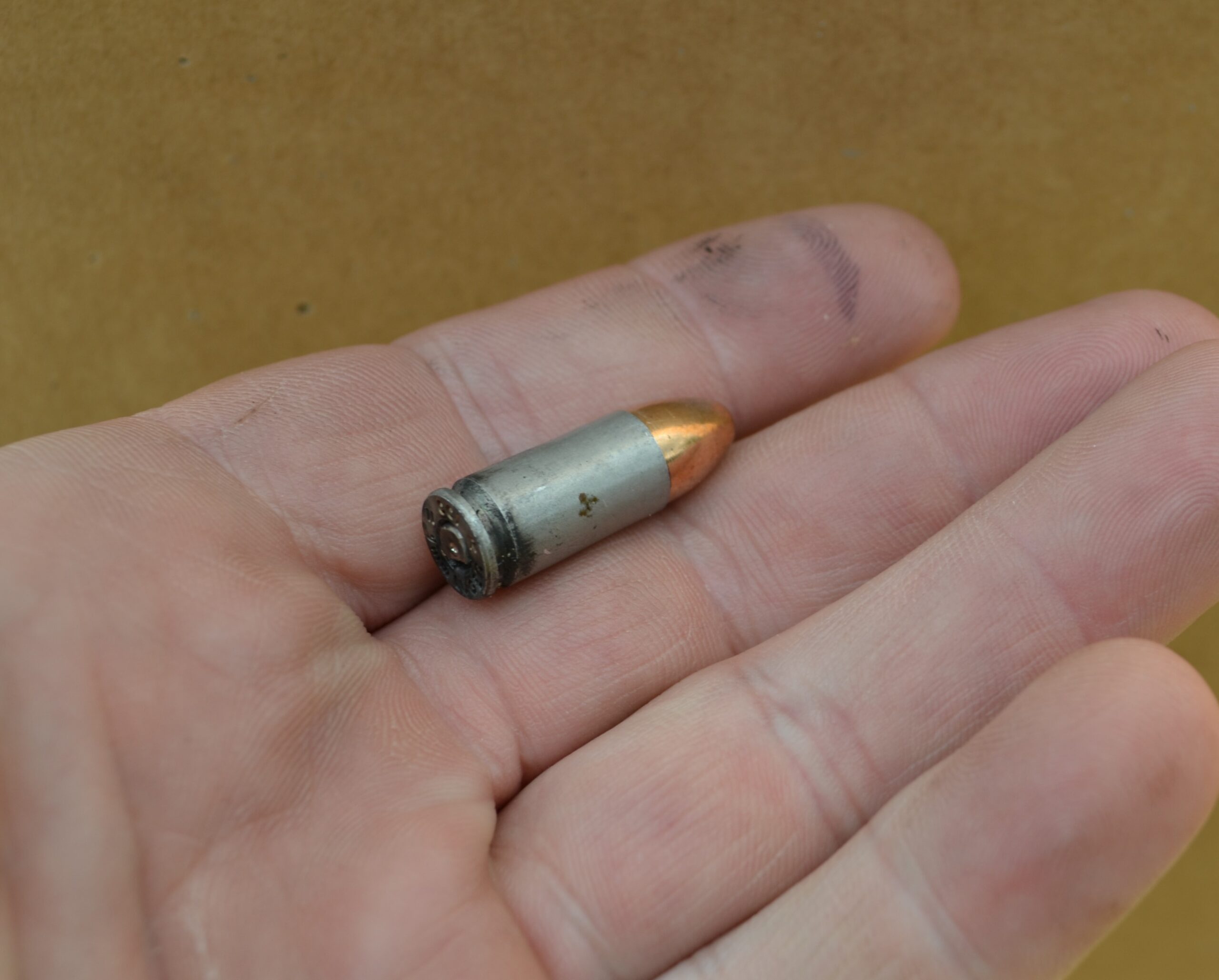“Luck has a way of evaporating when you lean on it.” – Brandon Mull
At a recent handgun class a student was performing a drill when they experienced a stoppage that appeared to be what is referred to as a “squib”. A squib load is most often caused by a round that is lacking a power charge, thus, when fired, the primer is all that detonates.
Squib fires are extremely dangerous as the primer charge produces enough pressure to separate the bullet from the case, but not enough pressure to launch it from the barrel. If the obstruction isn’t removed before another shot is attempted, it may result in a catastrophic detonation of the firearm.
In our student’s case, the failure to fire was recognized due to lack of recoil when the trigger was pressed, however, the sound of the primer detonation did not register due to hearing protection and other students firing simultaneously.
Our student did as trained – they took their finger off the trigger, moved, tapped the magazine base (to assure it was seated), and racked the slide (to clear the stoppage.) When the slide was racked an “intact” case and bullet was ejected.
Once the drill was completed a Fortress Instructor retrieved the round – upon inspection we were all left in stunned amazement. The primer had fired, but the ignition blew out between the primer and primer pocket wall.
The only way this could have occurred was if there was no flash hole!
The round in question was manufactured by CCI – they maintain a reputation for quality and are manufactured in the same Idaho plant as Federal and Speer. Whether or not they make their own cases in-house, I’m not sure. Regardless, this case made it through the inspection process and was loaded, packaged, and sold as…well, to be nice, a dud.
In reality, it was a death trap. Unintentionally, of course – but, should that have been the round in the chamber at the moment of truth, it could have cost its owner dearly.

The primer pocket flash hole (center of primer pocket) of a new Winchester 9mm case. Without that hole there’s no way for the primer flash to ignite the powder charge.
Lessons:
1. We can never trust even the most top-tier, computer aided, quality-controlled ammunition no matter how reputable the manufacturer. In my decades on the range I’ve seen (from almost every brand) missing primers, bullets seated backwards, crushed cases, and all manner of obvious defects that someone, somewhere should have noticed before it left the factory. But, nothing and no one is perfect. Thus, we must inspect each round before we trust our life to it!

Super Vel Factory round which arrived new in the box without a primer. It can happen with EVERY manufacturer. Inspect each round as you charge magazines!
2. When we visually inspect each carry round there are things like a missing flash hole that we’ll never see. Therefore, we must also engage in regular, relevant training, designed to assist in overcoming such problems during the fight. Stoppage reduction must be included in every practice session!
Even with a proper gun, ammunition, training, and life practices, nothing is guaranteed. When we find ourselves involved in a lethal force encounter, the only certainty is that our chance of injury or death is NOT zero percent. All we can do is attempt to sway the outcome in our favor through that which we have control over – specifically: preparation and mindset!
“When something is important enough, you do it! Even if the odds are not in your favor.” – Elon Musk






